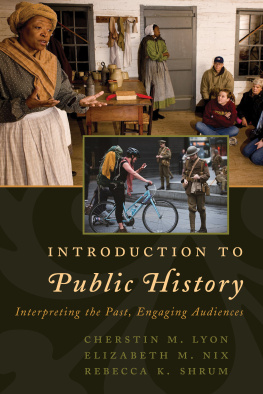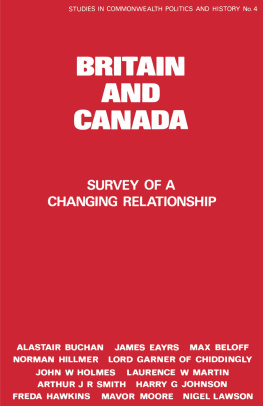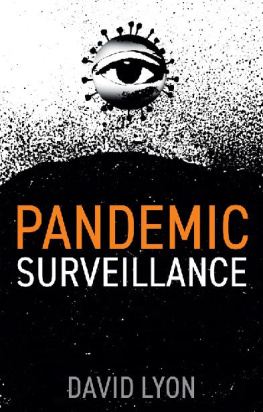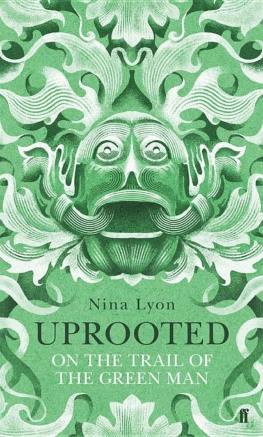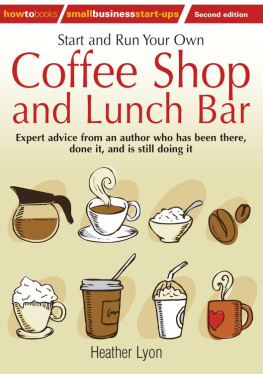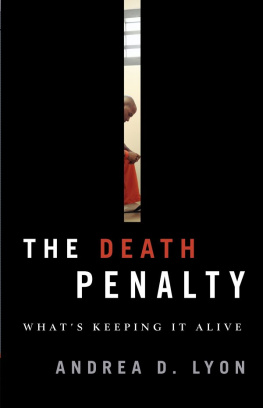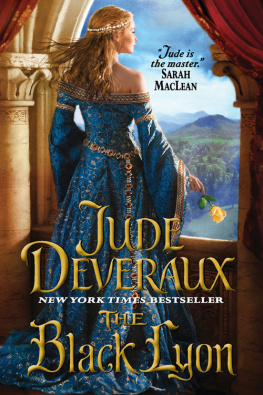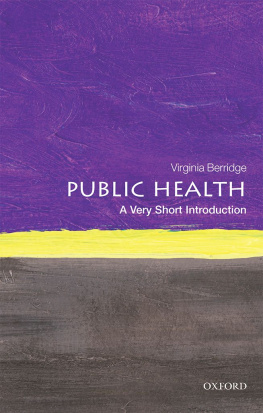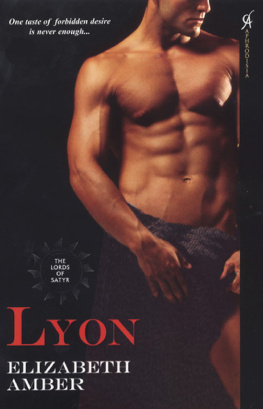Cherstin M. Lyon - Introduction to Public History
Here you can read online Cherstin M. Lyon - Introduction to Public History full text of the book (entire story) in english for free. Download pdf and epub, get meaning, cover and reviews about this ebook. year: 2017, publisher: Rowman & Littlefield Publishers, genre: Politics. Description of the work, (preface) as well as reviews are available. Best literature library LitArk.com created for fans of good reading and offers a wide selection of genres:
Romance novel
Science fiction
Adventure
Detective
Science
History
Home and family
Prose
Art
Politics
Computer
Non-fiction
Religion
Business
Children
Humor
Choose a favorite category and find really read worthwhile books. Enjoy immersion in the world of imagination, feel the emotions of the characters or learn something new for yourself, make an fascinating discovery.
- Book:Introduction to Public History
- Author:
- Publisher:Rowman & Littlefield Publishers
- Genre:
- Year:2017
- Rating:4 / 5
- Favourites:Add to favourites
- Your mark:
- 80
- 1
- 2
- 3
- 4
- 5
Introduction to Public History: summary, description and annotation
We offer to read an annotation, description, summary or preface (depends on what the author of the book "Introduction to Public History" wrote himself). If you haven't found the necessary information about the book — write in the comments, we will try to find it.
Introduction to Public History — read online for free the complete book (whole text) full work
Below is the text of the book, divided by pages. System saving the place of the last page read, allows you to conveniently read the book "Introduction to Public History" online for free, without having to search again every time where you left off. Put a bookmark, and you can go to the page where you finished reading at any time.
Font size:
Interval:
Bookmark:
Introduction to Public History
AMERICAN ASSOCIATION FOR STATE AND LOCAL HISTORY
BOOK SERIES
SERIES EDITOR
Rebecca K. Shrum, Indiana UniversityPurdue University Indianapolis
MANAGING EDITOR
Bob Beatty, AASLH
EDITORIAL BOARD
Anne W. Ackerson, Leading by Design
William Bomar, University of Alabama Museums
Jessica Dorman, The Historic New Orleans Collection
W. Eric Emerson, South Carolina Department of Archives and History
Tim Grove, National Air and Space Museum
Laura Koloski, Pew Center for Arts & Heritage
Russell Lewis, Chicago History Museum
Jane Lindsey, Juneau-Douglas City Museum
Ann E. McCleary, University of West Georgia
Laurie Ossman, Preservation Society of Newport County
Sarah Pharaon, International Coalition of Sites of Conscience
Laura Roberts, Roberts Consulting
Julia Rose, Homewood Museum at Johns Hopkins University
Sandra Smith, Heinz History Center
Kimberly Springle, Charles Sumner School Museum and Archives
William S. Walker, Cooperstown Graduate Program, SUNY Oneonta
ABOUT THE SERIES
The American Association for State and Local History Book Series addresses issues critical to the field of state and local history through interpretive, intellectual, scholarly, and educational texts. To submit a proposal or manuscript to the series, please request proposal guidelines from AASLH headquarters: AASLH Editorial Board, 2021 21st Ave. South, Suite 320, Nashville, Tennessee 37212. Telephone: (615) 320-3203. Website: www.aaslh.org.
ABOUT THE ORGANIZATION
The American Association for State and Local History (AASLH) is a national history membership association headquartered in Nashville, Tennessee. AASLH provides leadership and support for its members who preserve and interpret state and local history in order to make the past more meaningful to all Americans. AASLH members are leaders in preserving, researching, and interpreting traces of the American past to connect the people, thoughts, and events of yesterday with the creative memories and abiding concerns of people, communities, and our nation today. In addition to sponsorship of this book series, AASLH publishes History News magazine, a newsletter, technical leaflets and reports, and other materials; confers prizes and awards in recognition of outstanding achievement in the field; supports a broad education program and other activities designed to help members work more effectively; and advocates on behalf of the discipline of history. To join AASLH, go to www.aaslh.org or contact Membership Services, AASLH, 2021 21st Ave. South, Suite 320, Nashville, TN 37212.
Introduction to Public History
Interpreting the Past, Engaging Audiences
Cherstin M. Lyon
California State University, San Bernardino
Elizabeth M. Nix
University of Baltimore
Rebecca K. Shrum
Indiana University-Purdue University Indianapolis
ROWMAN & LITTLEFIELD
Lanham Boulder New York London
Executive Editor: Charles Harmon
Assistant Editor: Kathleen OBrien
Senior Marketing Manager: Deborah Hudson
Interior Designer: Rhonda Baker
Cover Designer: Chloe Batch
Credits and acknowledgments for material borrowed from other sources, and reproduced with permission, appear on the appropriate page within the text.
Published by Rowman & Littlefield
A wholly owned subsidiary of The Rowman & Littlefield Publishing Group, Inc.
4501 Forbes Boulevard, Suite 200, Lanham, Maryland 20706
www.rowman.com
Unit A, Whitacre Mews, 26-34 Stannary Street, London SE11 4AB, United Kingdom
Copyright 2017 by Rowman & Littlefield
All rights reserved . No part of this book may be reproduced in any form or by any electronic or mechanical means, including information storage and retrieval systems, without written permission from the publisher, except by a reviewer who may quote passages in a review.
British Library Cataloguing in Publication Information Available
Library of Congress Cataloging-in-Publication Data
Names: Lyon, Cherstin M., 1971 author. | Nix, Elizabeth M. (Elizabeth Morrow), 1964 author. | Shrum, Rebecca K. (Rebecca Kathleen), 1972 author.
Title: Introduction to public history : interpreting the past, engaging audiences / Cherstin M. Lyon, Elizabeth M. Nix, Rebecca K. Shrum.
Description: Lanham, MD : Rowman & Littlefield, [2017] | Includes index.
Identifiers: LCCN 2016051418 (print) | LCCN 2016053613 (ebook) | ISBN 9781442272217 (cloth : alk. paper) | ISBN 9781442272224 (pbk. : alk. paper) | ISBN 9781442272231 (electronic)
Subjects: LCSH: Public history. | Public historyTextbooks.
Classification: LCC D16.163 .L96 2017 (print) | LCC D16.163 (ebook) | DDC 900dc23
LC record available at https://lccn.loc.gov/2016051418
 The paper used in this publication meets the minimum requirements of American National Standard for Information SciencesPermanence of Paper for Printed Library Materials, ANSI/NISO Z39.48-1992.
The paper used in this publication meets the minimum requirements of American National Standard for Information SciencesPermanence of Paper for Printed Library Materials, ANSI/NISO Z39.48-1992.
Printed in the United States of America
For Our Children
Gareth Imparato, Nicholas Imparato, Forrest H. Lyon, Savannah M. Lyon, and Matthew Brady Shrum
Preface for Instructors
Welcome to Introduction to Public History: Interpreting the Past, Engaging Audiences . We wrote this book to provide public history educators with a foundational text that is short enough to adapt to a variety of situations, that will aid in assessment of student learning, and that can support more in-depth examinations of the questions that drive a variety of public history projects and venues. That said, we do not intend to provide a comprehensive, encyclopedic examination of every aspect of public history, nor cover every venue where nonacademic audiences encounter historical content. Given that the majority of students who take public history coursework do not become practicing public historians, we focus here on issues that arise at the kinds of venues that everyone encounters as consumers of the past.
This collaborative project began as a series of conversations between professors of public history at the annual meetings of the National Council on Public History (NCPH), the main professional organization supporting public history practitioners and teachers. One of those key conversations took place in Portland, Oregon, in 2010 at a working group organized by Cherstin Lyon and Rebecca Shrum, with Elizabeth Nix as a discussant, along with Donna DeBlasio, Jennifer Dickey, Catherine Lewis, Allison Marsh, and Phillip Payne. We continued to seek input from colleagues (both anonymously and known) and from students as we have developed this manuscript from the proposal stage, through an earlier draft, to the published version you have before you. Despite our efforts to meet diverse needs with a single volume, we know that each program, each instructor, and each group of students is unique. We encourage instructors to use this book in conjunction with the resources they have on their campuses and in their communities to develop activities and projects for their classes to serve as a genuine springboard into the field with as many local connections as possible.
Philosophy of the Book
The book as a whole aligns with the NCPH Best Practices for undergraduate students as a basic framework for introducing public history to undergraduate or graduate students. Regardless of a students standing, public history should first be rooted in the best practices of history and should be grounded in a solid understanding of historical content. Introductory courses are useful to orient students to the range of fields in which public history is practiced. Merely presenting the fields of practice, however, can look like a parade of career options to students, and also suggest that public history is a vocational choice rather than a distinct scholarly and intellectual enterprise with its own fundamental practices, premises, and lines of inquiry. Focusing on careers in this way can obscure how we all encounter and engage with public history and why it is important for everyone to understand what public history is and how it functions in our society.
Next pageFont size:
Interval:
Bookmark:
Similar books «Introduction to Public History»
Look at similar books to Introduction to Public History. We have selected literature similar in name and meaning in the hope of providing readers with more options to find new, interesting, not yet read works.
Discussion, reviews of the book Introduction to Public History and just readers' own opinions. Leave your comments, write what you think about the work, its meaning or the main characters. Specify what exactly you liked and what you didn't like, and why you think so.

